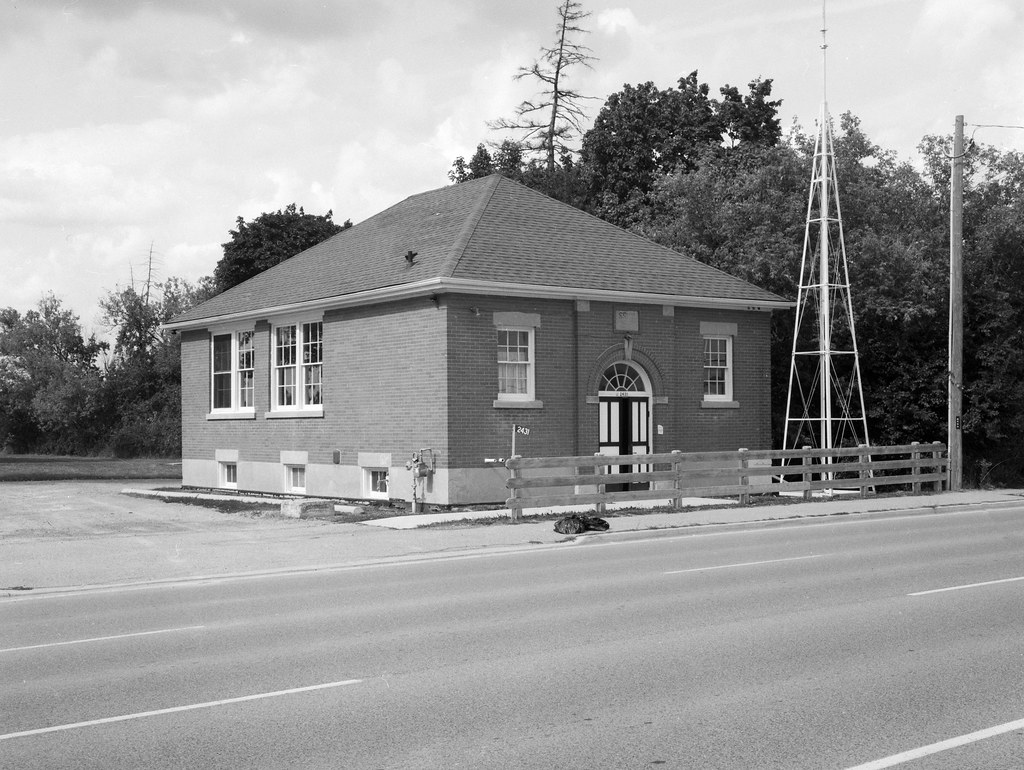Long before William Chisholm established his lakeside community, the earliest settlers of the Trafalgar Township established small communities along Dundas Road; some villages were often completely forgotten or so small that they never saw much mention. But others seemed to thrive until the 1960s. Palermo is one such village with a rich past, and traces can still be seen today.

Lawerence Hagger arrived in Upper Canada in 1799; a loyalist initially from Pennsylvania, Hagger settled near the modern community of Grimsby before moving to the Trafalgar Township in 1806. Hagger purchased a lot where the contemporary intersection of Dundas Street and Old Bronte Road. A farmer by trade, he quickly built a life for himself and welcomed other farmers and settlers to the region; at his farm, some of the first riders of the Methodist circuit held worship services. The small collection of farms became known locally as Hagerstown. By 1818 a cemetery had been established, and a log meeting house for the Methodist Congregation was constructed in 1824. The Methodists built their new brick church in 1867, which still stands today, and the Pioneer Cemetery still houses the mortal remains of the original settlers. As settlement of the region climbed, the first hotel and store were established in the 1830s, and postal service began in 1835. With the post office came the time to give a proper name to the small but thriving settlement. Palermo was chosen, in honour of legendary British Admiral Horatio Nelson, as Palermo was where Nelson was made Duke of Bronte. Industry soon followed as the village expanded through the 1840s, with an iron foundry, more hotels, stores, churches, and mills. Palermo reached its peak in the 1850s with a population of 300. A village hall and grammar school were soon added, along with proper wooden sidewalks. As the century turned, the little village continued to thrive, despite having no railway connection; the creation of the Provincial Highway system put Palermo at the intersection of Highway 5 and Highway 25, but after World War Two, the village began to decline. A fire in 1955 destroyed both a plastics plant and the foundry, cutting the community in half and removing the major employers. Improvements to the intersection of the two highways saw the appropriation and destruction of several historic buildings. In 1962, Palermo would be amalgamated into the town of Oakville, but by this point, it was a mere shadow of its former self. More historic buildings were demolished and replaced. But not everything went away; despite the relocation of Dundas and Regional Road 25 intersection and the rapid growth and building, Palermo retains some of its former characteristics. Two of the three historic Churches, Palermo United and St. Luke’s Anglican, remain thriving congregations that both still worship in their historic buildings. The 1942 School House stands in its original location and houses the Trafalgar Township Historical Society. And there’s even a tiny pub in a strip mall, the Palermo Pub, that keeps the name alive. Several historic homes are also still standing, but sadly many of these are abandoned and threatened by demolition.
The 1942 Palermo Schoolhouse is the perfect embodiment of the community; it is technically the communities third school. Having replaced the 1875 schoolhouse destroyed in a storm and used much of the original materials. It also is the home of the township’s historical society and is well worth visiting when its doors are open. I set myself up on a much narrower-than-expected median in the middle of Dundas. Using my 150mm lens to fill the frame with the schoolhouse better while providing a context for its location across three traffic lanes. Then metering for the roof and the sky, averaging the exposure with more given to the shadows and waited until a break in the traffic. Which at three in the afternoon can take a bit of patience.